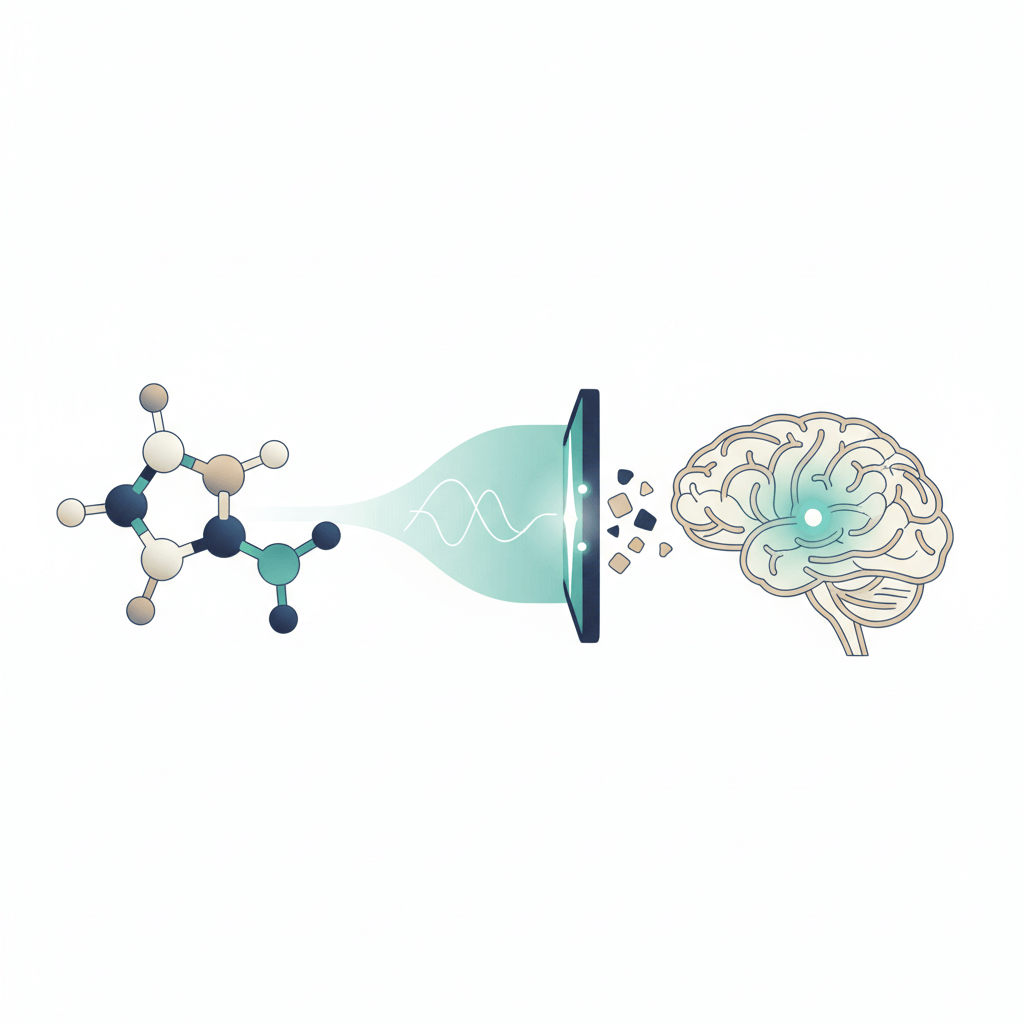Understanding Addiction
Addiction is a complex and multifaceted issue that affects individuals from all walks of life. It is important to have a clear understanding of what addiction is and how it impacts both individuals and society as a whole.
What is Addiction?
Addiction can be defined as a chronic and relapsing disorder characterized by compulsive drug use or engagement in certain behaviors despite negative consequences. It is often accompanied by a loss of control, cravings, and a strong urge to continue using substances or engaging in addictive behaviors.

Addiction can manifest in various forms, including substance addiction (such as drugs or alcohol) and behavioral addictions (such as gambling or gaming). Regardless of the specific addiction, the underlying mechanisms and impact on individuals remain similar.
The Impact of Addiction on Individuals and Society
Addiction has far-reaching consequences that extend beyond the individual struggling with the disorder. It affects not only the person directly involved but also their family, friends, and society as a whole.
On an individual level, addiction can lead to numerous negative consequences, including deteriorating physical and mental health, strained relationships, financial difficulties, and legal issues. The continuous cycle of addiction can cause a profound decline in overall well-being and quality of life.
At a societal level, addiction poses significant challenges. The economic burden of addiction includes healthcare costs, lost productivity, and increased crime rates. Substance abuse and addiction can contribute to the breakdown of families and communities, perpetuating a cycle of dysfunction and social instability.
By understanding the nature of addiction and its impact, we can better address the risk factors that contribute to its development. Exploring the genetic, environmental, and psychological factors that influence addiction can provide valuable insights into prevention and intervention strategies.
It is essential to recognize that addiction is a treatable condition. With the right support, education, and intervention, individuals can break free from the chains of addiction and embark on a path to recovery. By fostering a compassionate and understanding environment, we can help those struggling with addiction regain control of their lives and contribute to a healthier society.
Risk Factors for Addiction
Addiction is a complex condition that can be influenced by various factors. Understanding the risk factors for addiction is crucial in identifying and addressing potential vulnerabilities. These risk factors can be broadly categorized into genetic factors, environmental factors, and psychological factors.
Genetic Factors
Genetic factors play a significant role in determining an individual's susceptibility to addiction. These factors can contribute to the risk of developing an addiction by influencing the way the brain responds to substances. There are two main aspects of genetic factors to consider: family history of addiction and genetic predisposition.
Family History of Addiction
Having a family history of addiction can increase an individual's vulnerability to developing addiction themselves. Research suggests that genetic factors contribute to about 40-60% of the risk for addiction. Growing up in an environment where addiction is prevalent can also expose individuals to certain behaviors and patterns that normalize substance abuse. However, it's important to note that genetics alone do not determine whether someone will develop an addiction.
Genetic Predisposition
Genetic predisposition refers to an individual's inherited susceptibility to addiction. Certain genetic variations can affect the way neurotransmitters in the brain are processed, leading to an increased risk of developing addiction. However, it's essential to remember that genetic predisposition is not a guarantee that someone will become addicted. Environmental and psychological factors also play significant roles in the development of addiction.
Environmental Factors
Environmental factors encompass the external circumstances and influences that can contribute to the risk of addiction. These factors can range from peer influence to traumatic experiences and access to substances.
Peer Influence
Peer influence, particularly during adolescence, can significantly impact an individual's likelihood of engaging in substance abuse. When surrounded by peers who engage in drug or alcohol use, individuals may feel pressured to conform and experiment with substances themselves. The need to fit in and seek social acceptance can increase the risk of developing addiction.
Access to Substances
Easy access to substances is another environmental factor that can contribute to addiction. Individuals who have frequent exposure to drugs or alcohol through their environment, such as at home or in social settings, may be at a higher risk of developing addiction. Access to substances can lower barriers to experimentation and increase the potential for substance abuse.
Traumatic Experiences
Experiencing trauma, especially during childhood, can significantly impact an individual's risk of addiction. Traumatic events like physical or emotional abuse, neglect, or witnessing violence can lead to the development of addiction as a coping mechanism. Trauma can also affect brain development, making individuals more susceptible to addiction later in life.
Psychological Factors
Psychological factors encompass various aspects of an individual's mental well-being that can influence the risk of addiction. These factors include mental health disorders, coping mechanisms, and personality traits.
Mental Health Disorders
Individuals with mental health disorders, such as depression, anxiety, or bipolar disorder, are at a higher risk of developing addiction. Substance abuse can often be a way to self-medicate or alleviate symptoms of these disorders. The co-occurrence of addiction and mental health disorders, known as dual diagnosis or co-occurring disorders, requires specialized treatment approaches.
Coping Mechanisms
The way individuals cope with stress and difficult emotions can impact their risk of addiction. If individuals lack healthy coping mechanisms or have limited access to support systems, they may turn to substances as a way to escape or numb emotional pain. Developing healthy coping skills and seeking appropriate support are crucial in reducing the risk of addiction.
Personality Traits
Certain personality traits, such as impulsivity, sensation-seeking, and a propensity for risk-taking, can contribute to the risk of addiction. Individuals who possess these traits may be more likely to engage in substance abuse as a way to seek excitement or thrills. Identifying and addressing these personality traits can be an important part of addiction prevention.
Understanding the risk factors for addiction is vital in developing effective prevention strategies and interventions. By recognizing the role of genetic, environmental, and psychological factors, we can work towards creating supportive environments, providing education and awareness, and offering appropriate treatment and recovery options.
Genetic Factors
When examining the risk factors for addiction, genetic factors play a significant role in determining an individual's susceptibility to developing addictive behaviors. These genetic factors can contribute to an increased likelihood of addiction through both family history and genetic predisposition.
Family History of Addiction
A family history of addiction can be a strong indicator of an individual's vulnerability to developing addictive behaviors. Research has shown that individuals with a family history of addiction are at a higher risk of developing addiction themselves. This increased risk can be attributed to a combination of genetic and environmental factors. Growing up in an environment where addiction is prevalent can expose individuals to substances and behaviors associated with addiction, increasing the likelihood of their own substance use.
Genetic Predisposition
Genetic predisposition refers to the inherited genetic traits that can influence an individual's vulnerability to addiction. Certain genetic variations can affect the way the brain responds to substances, leading to a heightened sensitivity or a diminished response. These genetic differences can impact an individual's reward system, impulse control, and stress response, making them more susceptible to addiction. While genetics alone do not determine addiction, they can contribute to an individual's overall risk. Understanding the presence of genetic predisposition can help individuals make informed decisions and take necessary precautions to prevent the development of addiction.
It's important to note that genetic factors are just one piece of the puzzle when it comes to addiction. Environmental and psychological factors also play crucial roles in the development of addictive behaviors.
By recognizing the influence of genetic factors on addiction risk, individuals can gain a better understanding of their own vulnerabilities and make informed choices regarding substance use. Additionally, early intervention and prevention strategies can be implemented to address these risk factors and mitigate their impact.
Environmental Factors
When it comes to understanding the risk factors for addiction, environmental factors play a significant role. These external influences can contribute to the development of addictive behaviors. In this section, we will explore three key environmental factors: peer influence, access to substances, and traumatic experiences.
Peer Influence
Peer influence can have a powerful impact on an individual's likelihood of developing an addiction. Friends and acquaintances can shape behaviors, attitudes, and beliefs, including those related to substance use. The desire to fit in or seek acceptance from a particular social group may lead individuals to engage in substance abuse. Peer pressure can be especially influential during adolescence when individuals are more susceptible to external influences.
It is crucial to recognize the importance of positive peer groups and supportive social networks in preventing addiction. Building healthy relationships and surrounding oneself with individuals who promote healthy behaviors can serve as a protective factor against substance abuse.
Access to Substances
Easy access to substances is another significant environmental risk factor for addiction. When substances are readily available, it becomes more tempting for individuals to experiment and develop a reliance on them. Factors such as the availability of drugs within a community, the presence of substance-abusing peers, and the normalization of substance use can increase the likelihood of addiction.
Restricting access to substances, particularly during vulnerable periods, can help mitigate the risk of addiction. Implementing policies that regulate the availability of drugs and alcohol, such as age restrictions and controlled substance laws, can contribute to prevention efforts. By limiting access, individuals are less likely to engage in substance abuse.
Traumatic Experiences
Traumatic experiences, such as physical or emotional abuse, neglect, or witnessing violence, can significantly impact an individual's vulnerability to addiction. Trauma can lead to psychological distress, and individuals may turn to substances as a means of coping with their pain, numbing their emotions, or escaping from their traumatic memories. The correlation between childhood trauma and addiction has been extensively explored, indicating a strong link between the two.
Recognizing the impact of trauma on addiction risk is crucial for both prevention and intervention efforts. Providing trauma-informed care, including therapy and support services, can help individuals address the root causes of their addiction and develop healthier coping mechanisms.
Understanding and addressing these environmental risk factors can contribute to effective prevention strategies and early intervention efforts. By creating supportive environments, promoting education and awareness, and providing access to appropriate treatment and recovery options, we can work towards breaking the chains of addiction.
Psychological Factors
When it comes to understanding the risk factors for addiction, psychological factors play a significant role. These factors can contribute to the development of addiction and influence an individual's susceptibility to substance abuse. In this section, we will explore three key psychological factors: mental health disorders, coping mechanisms, and personality traits.
Mental Health Disorders
Mental health disorders are closely linked to addiction, as individuals may turn to substances as a way to self-medicate and alleviate their symptoms. Conditions such as anxiety, depression, post-traumatic stress disorder (PTSD), and attention deficit hyperactivity disorder (ADHD) can increase the risk of developing an addiction.
According to a study published in the Journal of the American Medical Association, individuals with mental health disorders are about twice as likely to experience substance abuse compared to those without mental health issues. The interaction between mental health and addiction is complex, and it is crucial to address both aspects simultaneously in treatment and recovery.
Coping Mechanisms
Coping mechanisms refer to the strategies individuals use to manage stress, emotional pain, and difficult life circumstances. Healthy coping mechanisms, such as exercise, mindfulness, and seeking support, can help individuals navigate challenging situations without resorting to substance abuse. However, unhealthy coping mechanisms, such as self-isolation, avoidance, and substance use, can contribute to the development of addiction.
Individuals who lack effective coping skills or have limited access to healthy coping mechanisms may be more vulnerable to addiction. Developing healthy coping mechanisms and learning alternative ways to manage stress and emotions are crucial steps in reducing the risk of addiction.
Personality Traits
Certain personality traits can also influence an individual's susceptibility to addiction. Traits such as impulsivity, sensation-seeking, low self-esteem, and a need for social approval have been associated with an increased risk of substance abuse. These traits may make individuals more likely to experiment with substances or engage in risky behaviors.
It's important to note that personality traits alone do not determine whether someone will develop an addiction. However, individuals with certain personality traits may be more prone to engaging in substance abuse if other risk factors are present in their lives. Understanding these personality factors can help in designing targeted prevention and intervention strategies.
By recognizing the role of psychological factors in addiction risk, we can better understand the complexities of substance abuse. Addressing mental health disorders, developing healthy coping mechanisms, and promoting awareness of personality traits associated with addiction vulnerability are essential steps in preventing and addressing addiction. Creating supportive environments and providing access to treatment and recovery options are also crucial in breaking the chains of addiction.
Breaking the Chains: Prevention and Intervention
Addressing addiction requires a comprehensive approach that focuses on prevention and intervention strategies. By targeting the risk factors associated with addiction, individuals and communities can work together to break the chains of addiction. This section will explore three key areas: education and awareness, supportive environments, and treatment and recovery options.
Education and Awareness
Education and awareness play a crucial role in preventing and addressing addiction. By providing accurate information about the risks and consequences of substance abuse, individuals can make informed decisions and take steps to protect themselves and their loved ones. Educational programs can be implemented in schools, workplaces, and communities to raise awareness about the dangers of addiction and promote healthy behaviors.
Furthermore, fostering open conversations about addiction helps reduce stigma and encourages individuals to seek help when needed. By discussing the signs, symptoms, and available resources, people can better understand the nature of addiction and support those who may be struggling.
Supportive Environments
Creating supportive environments is essential for preventing and addressing addiction. Support can be provided through various means, such as community programs, support groups, and counseling services. These resources offer a safe space for individuals to seek guidance, share their experiences, and receive emotional support.
In addition, promoting positive relationships and healthy social connections can help individuals build resilience and reduce the risk of addiction. Strong social support systems act as a protective factor, providing individuals with a network of people who understand and encourage their recovery journey.
Treatment and Recovery Options
For those already struggling with addiction, access to appropriate treatment and recovery options is vital. Treatment can take various forms, including therapy, counseling, medication-assisted treatment, and support groups. These interventions aim to address the underlying causes of addiction, develop coping mechanisms, and support individuals in their journey towards recovery.
Rehabilitation centers and outpatient programs provide structured environments where individuals can receive the necessary support and guidance to overcome addiction. These programs often combine individual and group therapy, education, and skill-building activities to help individuals regain control of their lives. Supportive aftercare programs and relapse prevention strategies are also essential in maintaining long-term recovery.
By understanding the risk factors for addiction and implementing effective prevention and intervention strategies, individuals and communities can work together to break the cycle of addiction. Education, supportive environments, and access to treatment and recovery options form a comprehensive approach to address addiction and promote healthier, drug-free lives.













